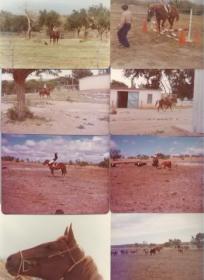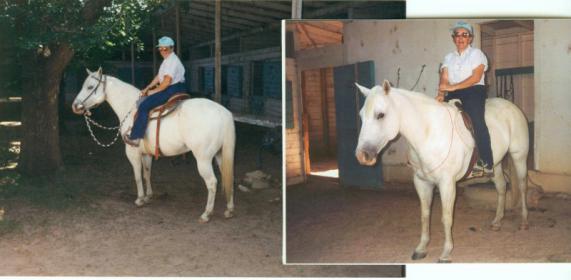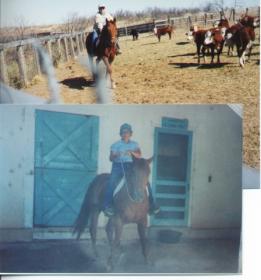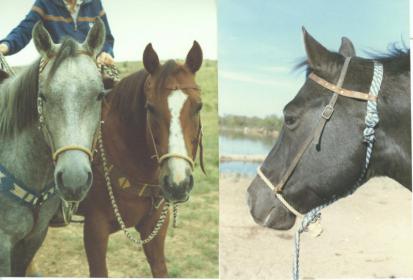[QUOTE=Wirt;7245030]
Someone mentioned that buck says doubling is the same as dis-engaging the hind quarters. This is one of those things that people repeat, because if Buck said it, it must be true. But it’s not. Doubling if anything is about setting the hind feet. It is also used to not allow a horse to brace against a hackamore. But it is not the same as dis-engaging. Dis-engaging is a modern construct, really. Ed Connel explains doubling in depth. Dis-engaement has become such a magical thing buzz word for some. Practically a secret handshake for the Buck crowd. Frankly, I think it is overdone.
Not to take anything away from Buck. Buck is Buck, no one is quite like him. But he says and does a lot of things that are of his own invention, with the purpose of teaching people who don’t know anything anyway. But Buck says a lot of things other hands disagree with. I don’t know why he says he doesn’t want to waste time in the two rein stage, for instance. I don’t know why he says the hackamore is a bluff. But that is a common thing that I have heard my whole life. Except in my own experience, it is no more a bluff than a snaffle…[/QUOTE]
That is right, much said in the past posts is not quite correct.
Doubling is what you do, with a hackamore most times, although you can with a snaffle also.
The old West stiff, thick bosal, that many don’t like at all, they go bump on a horse’s nose all the time as it moves, making them sore, or the light grass rope hackamore we use in the SW, that is more limber and has so much more feel to it.
Doubling is teaching a horse to give and move from your request, have seen it done with a halter also, but halters are just too loose to give good signals, unless you have the horse already trained to doubling.
As Pine Johnson, of Poco Bueno fame explained it, you double, generally a colt, watching it’s hind feet, that is what you want to control from the ground and teach the colt to move them and move over them, both, that is the idea of doubling.
You double by moving the colt a bit sideways, when he understands to follow your hand on the hackamore reins with the lightest pull and give, then you ask that he move his hind legs with that slight lift of the rein, here single split cotton reins, that have some heft to them.
Once the colt’s mind knows that the slight movement of the rein on that side means move my hind feet over, then you ask them to start bringing their front end around, the hind end still.
All that takes maybe two to five minutes, depending on how light you have the colt from regular handling.
What we called it here was keeping your colt handy, not letting it park itself on it’s feet on you, so they don’t learn resistances from the start, which may lead to fights or blow-ups.
Once you have the colt understanding what the weight of the reins wiggling mean, you can throw the one rein over it’s head and have the colt move all around in front of you, to the opposite side, following that feel of the rein and that is when you know you can get on that colt and you will not have him plant himself without knowing what to do and that you will have a way to guide that colt.
I have seen people that understand those concepts of those minutes on the ground, teaching responding to reins by moving their body a certain way, get on a colt and keep it moving and working, not with finesse, of course, but already working properly for them, really fun to watch that.
Many of the good horseman have always done something like that, because it is what works and makes sense.
I saw that in Europe over 50+ years ago, I see it today.
Many in the colt competitions are aware and do it, some don’t, Tracy Westfall, when she won one, comes to mind.
By the time she got on a very waspy colt, he already had some idea of what was expected of him, unlike how others were starting their colts, that had to learn on the fly as someone got on their backs, not that well prepared as they could have been.
I started all our colts, ranch and race colts, with our grass rope hackamore, some for months and always going back to it once older, it is easier on a horse running thru the brush than bits in their mouths, the race colts just for a few weeks, then onto a snaffle.
I never had a horse run thru the hackamore, because that only happens if you don’t know what you are doing and you have a horse that doesn’t understand what you are asking with one.
I have seen it happen to the occasional cowboy, but you could see it coming, the way he was hauling around on it.
Here are some of the colts and older horses we used working here, with our homemade grass rope hackamore, a practice started and taught by Pine Johnson in our area in the middle of the last century.
The first picture was some of a race bred filly I started with our hackamore, one how she transitioned to the snaffle.
In about the fourth ride, look how she is bracing to me asking her to back with that rope, because I had not realized that stump was very, very heavy, she was struggling to even starting to move it, the roots were digging in hard.
Yes, some times, we make mistakes and learn from them too.
She went on to run in Luisiana:












 It is the horse’s feelings, getting it to THINK with you and SEARCHING for that togetherness/with-you-ness and that good deal. I know all the master horseman know this and do this, and I love it when it is TALKED ABOUT and TAUGHT more.
It is the horse’s feelings, getting it to THINK with you and SEARCHING for that togetherness/with-you-ness and that good deal. I know all the master horseman know this and do this, and I love it when it is TALKED ABOUT and TAUGHT more.
